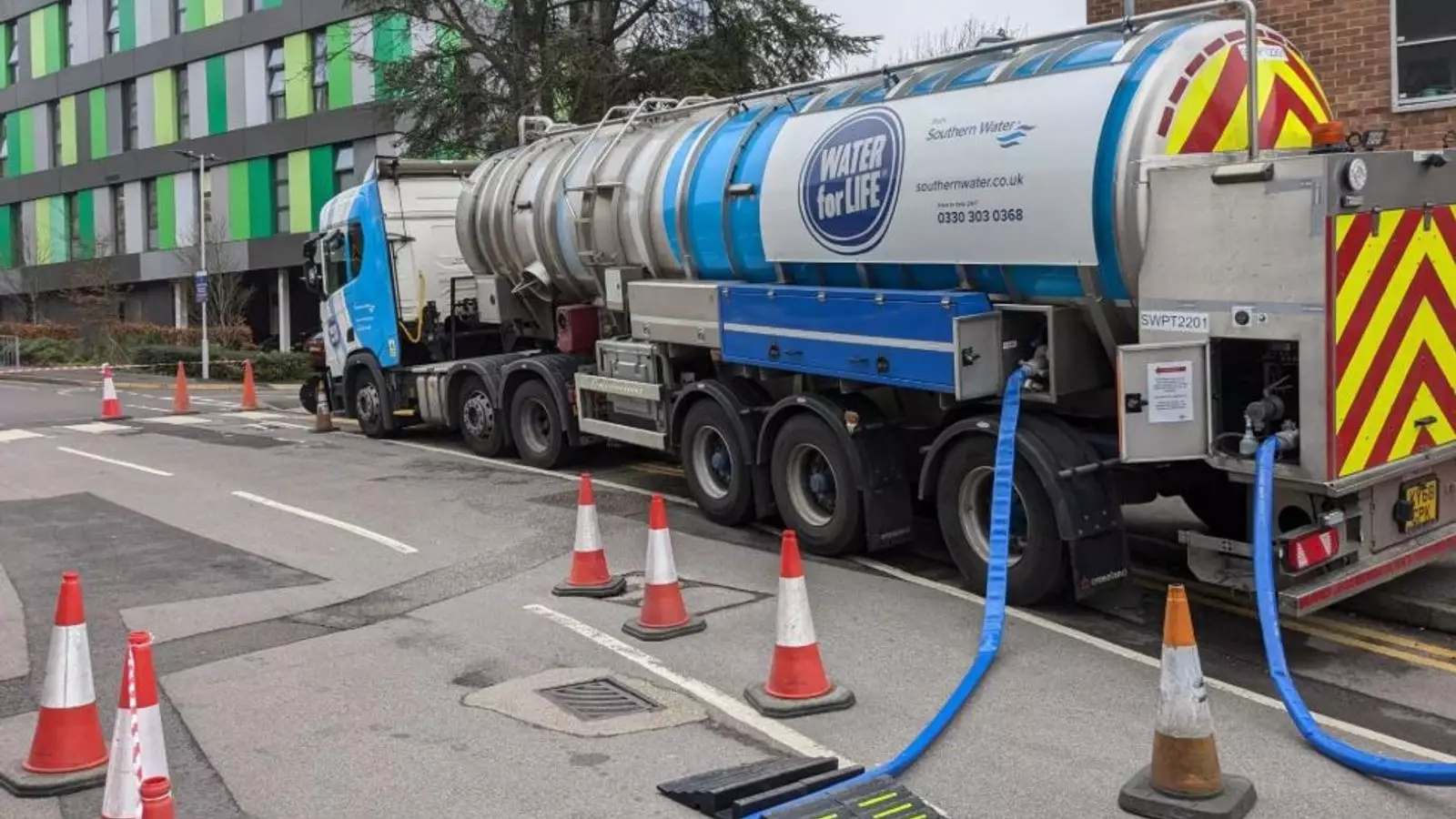In a major setback for residents across Hampshire, nearly 60,000 homes are currently grappling with a significant water supply interruption attributed to a “technical issue” at Southern Water’s Testwood supply works. The incidents have predominantly impacted areas including Southampton, Romsey, Eastleigh, Totton, and several parts of the New Forest. The disruption stems from complications that have hindered water distribution from the supply facility, leaving thousands without this essential resource. Southern Water has publicly acknowledged the issue, emphasizing their commitment to rectifying the situation, but has forewarned that full restoration may not be achieved until the weekend.
In response to the crisis, the company has activated emergency measures, establishing water distribution points to assist affected residents. Locations such as the Places Leisure Centre in Eastleigh, Sainsbury’s superstore in Southampton, and the Asda superstore in Totton have become hubs for bottled water distribution. Long lines have formed, highlighting the urgency of the situation as community members seek to secure basic hydration amid rising frustration. Moreover, Southern Water assures the continuity of supply to priority customers, including vulnerable individuals and healthcare facilities, with specialized tankers dispatched to Southampton General Hospital and Princess Anne Hospital to mitigate disruptions in medical services.
Financial Concerns Amidst Service Challenges
Ironically, this disruption occurs in tandem with anticipated hikes in water bills for consumers across England and Wales. Southern Water is pursuing an unprecedented 84% increase in tariffs, while Thames Water has also sought a hefty 53% rise. These proposals arrive at a time when regulatory body Ofwat is slated to unveil projected bill increases, which may rise by at least 20% by the year 2030. This rate adjustment translates to an estimated £20 annual increase per household, pushing average yearly bills from £448 to £542. The intention behind these increases is largely attributed to a proposed £88 billion investment aimed at upgrading infrastructure, enhancing service delivery, and fostering environmental sustainability.
The ongoing water supply crises expose a significant vulnerability within the infrastructure of essential services. Customers are left to navigate the immediate fallout of a disruption while grappling with the prospect of rising costs. The yet unresolved situation raises critical questions regarding facility management, emergency preparedness, and public communication strategies during crises. Furthermore, the coinciding rise in utility costs amidst service unreliability could lead to heightened discontent among consumers, potentially prompting questions about the long-term viability of current water service models and the accountability of providers.
As Hampshire residents endure the inconveniences of this water supply interruption, the overarching concerns extend beyond immediate access to clean water. If Southern Water’s technical failures underscore the need for enhanced resilience across water supply systems, they also warrant a broader dialogue on the balance between necessary infrastructure investment and the affordability of essential services for consumers. The coming days will be crucial for both the residents affected by these outages and the service providers responsible for ensuring that such incidents have minimal long-term impact on communities.

